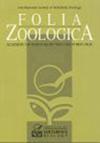Microhabitat use and separation between giant panda (Ailuropoda melanoleuca), takin (Budorcas taxicolor), and goral (Naemorhedus griseus) in Tangjiahe Nature Reserve, China
Q2 Agricultural and Biological Sciences
引用次数: 4
Abstract
Abstract. The coexistence mechanisms of sympatric species have attracted wide attention from ecologists. The giant panda (Ailuropoda melanoleuca), takin (Budorcas taxicolor) and goral (Naemorhedus griseus) are species which are being seriously endangered along to the Himalayan-Hengduan Mountains. To improve the understanding of mechanism of microhabitat separation and coexistence between the giant panda and the other two sympatric species, we investigated microhabitat characteristics at Tangjiahe Nature Reserve, Qingchuan County of Sichuan Province, China during 2013 by sampling 86 fecal-site plots for giant pandas, takins and gorals as well as 80 control plots. Our results suggested that each species has their own specific microhabitat selection pattern. Furthermore, the giant pandas more often selected microhabitats with gentler slope, more bamboo, lower tree canopy and a small herb shrub while the takins and gorals preferred the microhabitats with less bamboo, but more trees and shrubs. Thus, based on our findings, food resources, dietary requirements and energy expenditure are considered as the main ecological factors which caused the microhabitat separation among these three species. Because of the narrow dietary, the giant panda's specificity to its microhabitat is higher than that of the other two animals, which results in their segmentation. This study provides a scientific evidence that conservation efforts should be under way to protect the sympatric habitat, not only the suitable habitat for giant pandas but also that of takins and gorals, which can make a great improvement to the local biodiversity.唐家河自然保护区大熊猫(Ailuropoda melanoleuca)、羚牛(Budorcas taxicolor)和山羊(Naemorhedus griseus)的微生境利用与分离
摘要同域物种的共存机制引起了生态学家的广泛关注。大熊猫(Ailuropoda melanoleuca)、羚牛(Budorcas taxicolor)和山羊(Naemorhedus griseus)是沿喜马拉雅-横断山脉分布的严重濒危物种。为了更好地了解大熊猫与其他两种同域物种的微生境分离与共存机制,2013年在四川省青川县唐家河自然保护区,通过对86个大熊猫、羚牛和野狗粪便样地以及80个对照样地的取样,研究了大熊猫与其他两种同域物种的微生境特征。结果表明,每个物种都有自己特定的微生境选择模式。此外,大熊猫更倾向于选择坡度较缓、竹材较多、树冠较低、草本灌木较少的微生境,而鹦鹉和野猫则更倾向于选择竹材较少、乔木和灌木较多的微生境。因此,根据我们的研究结果,食物资源、饮食需求和能量消耗是导致三种物种微生境分离的主要生态因素。由于饮食狭窄,大熊猫对其微生境的特异性高于其他两种动物,这导致了它们的分割。本研究提供了科学依据,表明应加强对同域栖息地的保护,不仅要保护大熊猫的栖息地,而且要保护野生动物和野生动物的栖息地,这将大大改善当地的生物多样性。
本文章由计算机程序翻译,如有差异,请以英文原文为准。
求助全文
约1分钟内获得全文
求助全文
来源期刊

Folia Zoologica
生物-动物学
CiteScore
1.70
自引率
0.00%
发文量
0
审稿时长
3 months
期刊介绍:
Information not localized
 求助内容:
求助内容: 应助结果提醒方式:
应助结果提醒方式:


